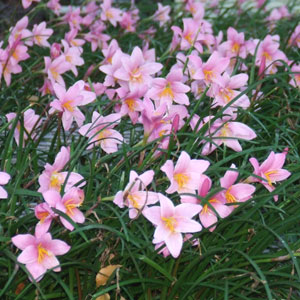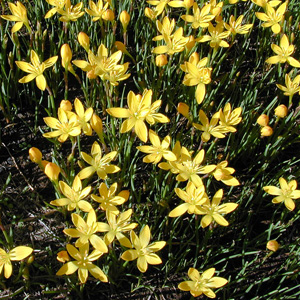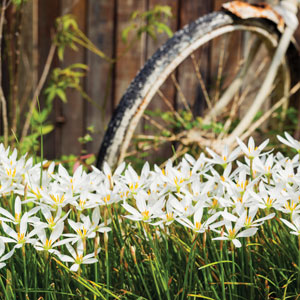Zephyranthes Growing Guide

What is Zephyranthes?
Zephyranthes (Zephyranthes spp.) also known as Rain Lily, Rain Flower, Zephyr Lily, Storm Lily, Wind Flower is a bulbous perennial that originated from North and South America. A member of the Amaryllidaceae family, the Zephyranthes has many different species that all share similar traits such as flowers and foliage. They rely on occasional Summer watering or natural heavy rainfall to initiate flowering.
Benefits of Growing Zephyranthes
During Summer, Zephyranthes produce crocus-like starry flowers and fine grassy like leaves that can be evergreen in some varieties. Flowers range in colour from white, pink or yellow, depending on the species. These bulbs multiply rapidly and after only a few years you could have many mature bulbs.
Zephyranthes are highly pest resistant. They are hardy, drought tolerant and frost hardy once established.
How to Grow Zephyranthes
Climatic Zones
Suitable for all climates.
Plant Size
Height: 20cm, Width: 10cm
When To Plant Zephyranthes
They can be planted throughout most of the year.
Soil Preparation
Zephyranthes require a well drained soil. Digging compost or well decayed manure through the soil will improve growth.
How To Plant Zephyranthes
Plant in full sun to part shade, 15cm apart with the tip of the bulb at soil level.
Zephyranthes Plant Care
Zephyranthes are best left undisturbed for best performance, larger clumps can be divided during dormancy. Try to divide and move the bulbs only when the garden bed or pot becomes overcrowded. During the Autumn the plants die back to become dormant.
Top dress with all purpose fertiliser, compost or well decayed manure during early Summer to improve growth. Water well after fertilising.
Protect new growth from frosts.
Recommended Varieties
Great for rockeries, pots and border planting, Zephyranthes are another low maintenance bulb that you can plant and forget.









